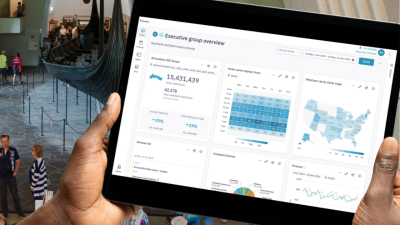Many people tell us that, in the future, museums need to be more entrepreneurial. It’s hard to find written case studies, however, of museums innovating in businesslike ways. Today’s guest post helps fill that gap, as Karen Coltrane, president and CEO of the Children’s Museum of Richmond, blogs about how CMOR became the first children’s museum in the county to open a satellite location. They’ve been fielding calls from other children’s museums considering a similar model—some hoping to fend off competition, others to reach new audiences.
This week the Children’s Museum of Richmond is announcing plans to open a second satellite location. We started experimenting with satellites for several reasons, chief among them financial survival. Our first satellite location helped us achieve that goal, but it brought other significant benefits, too—expansion of our mission by increasing the numbers we serve (attendance is up 56%), strengthening of our community partnerships and enhanced relevance of our institution within our community.
Being good at what you offer at your main museum is a prerequisite for opening more locations. We had raised and spent nearly $1,000,000 over three years to improve our exhibit areas, revamp our education programming and develop a full calendar of well-marketed events (on average, one major event every two weeks) to insure CMOR was visible and top of mind with young families. A pre-satellite marketing study confirmed that those efforts were successful—we had 98% brand awareness in our market (defined as area families with children under the age of eight) with 90% of respondents rating our offerings as high or very high in quality.
The same study noted that despite our extremely positive perception, most of the families in our region only visited us once per year, citing lack of convenience associated with our location. In our market, young families don’t want to drive more than 20 minutes for a visit. Many parents commented that by the time they wrestle the little ones into the car seats and drive for a half hour, the children have fallen asleep and waking them for the visit posed challenges. Also, our location in the city’s museum district, away from shopping and family-friendly restaurants, made a trip to our museum a special destination that couldn’t be combined easily with other regular activities. So while our museum enjoyed strong goodwill, the majority of our market only visited occasionally for exceptional events.
Once we understood that convenience was the only thing keeping us from serving more visitors, we started to explore our options. We included the satellite location concept in our strategic plan. The special committee convened to consider the issue included a group of our current and past board members and other community leaders, led by the community’s most forward thinking volunteer, a well respected former corporate CEO who is now a business school professor and nonprofit advisor.
Several pertinent questions came to light. First, we were very surprised – and a bit concerned – that there were not satellite models in the children’s museum world to follow. Second, we wondered if a satellite in a more vibrant area would “cannibalize” the attendance at our main location. Third, while the staff was confident, the board rightly asked if we could manage another location with current management. And last but certainly not least, everybody was concerned that we might appear to be “abandoning” our mission by focusing on wealthier suburbs to the exclusion of lower income, urban neighborhoods.
The committee’s discussions were probably the most rigorous and thoughtful in the museum’s recent history. They resulted in a recommendation to the Board to look not only at one branch in the region’s western suburbs, but to consider an entire branching strategy that would bring 12–15,000 square foot versions of the 40,000 square foot main museum to densely populated areas not strongly represented in our current attendance. The Board adopted the strategy in October 2009 and the initial satellite opened in June 2010. In its first full year of operation, 130,000 people visited the new location, while attendance stayed the same, 230,000, at our main museum.
Operationally, we learned—and are still learning—important lessons. Staffing has been much easier than we expected. We initially sent a member of the management team to run the day to day operations, but she was bored quickly and we were able to bring her back to take on a bigger role, replacing her with an assistant director of guest services who reports to a director of guest services at our main location. In fact, the satellite runs so smoothly that we decided to hold our weekly management team meetings there just to make sure our key staff are in the facility once a week. Our ticketing/finance/development/shop software company, Explorer, happily worked with us to adapt their program to support multiple locations. And while we keep an eye on the satellite’s revenues and expenses, we are careful to roll the numbers up to reinforce the culture that we are one museum—we just happen to have two (or more) locations.
The best outcome of our satellite strategy, thus far, has been the ability to move from daily worry about making this week’s payroll to the freedom to explore pathways to greater impact throughout our community. In just the first year of operation we were able to:
- provide free and low cost field trip programming to thousands of young students from under-resourced area schools
- engage area school superintendents in real, regular dialog with the museum’s leadership about early childhood education
- create a new position dedicated to parent education and engagement
We can now proactively pursue relationships and ideas that further our mission in ways we could barely dream about before. For us, a branching strategy serves more visitors, while providing the resources to do more good in our community.
Skip over related stories to continue reading article









Comments